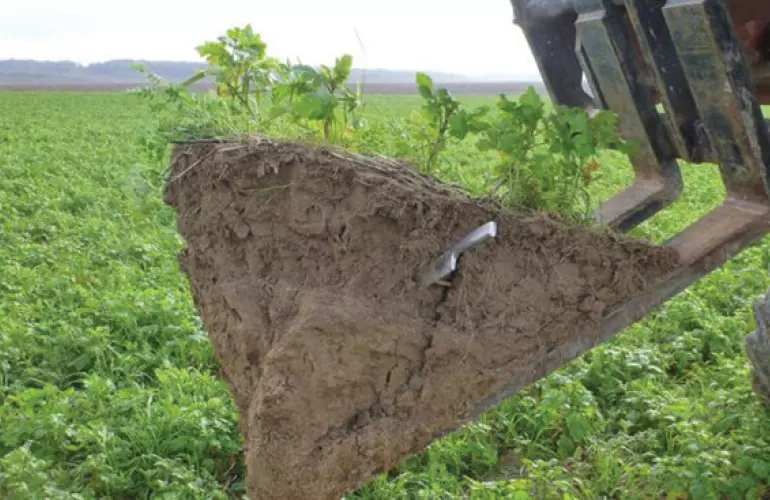
Soil is a complex environment. It has to be able to support abundant and diverse biological life in order to be resilient and provide crops with what they need.
Far from being inert, soil is rich with living organisms, including micro-organisms (bacteria, fungi, etc.) and macro-organisms (earthworms, insects etc.).
Soil can be considered living so long as living organisms and organic matter are present with the minerals. Biological activity is essential for structuring and airing the soil. For instance, earthworms mix soil up which improves the deep-down structure. Micro-organisms recycle organic matter and create cohesion between the particles in the soil. Biological-rich soil is less sensitive to erosion, packing, and slating.
Water retention is also better. Macro-fauna, such as earthworms, are essential for improving soil structure. Their burrowing promotes water circulation.
Crops also need the biological life in the soil for nutrition as the different organisms decompose the organic matter. For example, earthworms consume cellulose, and fungi attacks lignin. This leads to the mineralisation of organic matter and the release of nutrients that plants can assimilate. Micro-organisms form the rhizosphere, a sort of film, around roots. This is where nutrients are exchanged between soil and plant. The richer the soil is in organic matter the better the environment for crop growth.
Making the right tillage choice for your soil
Choosing the right tillage method depends on your soil type, crop needs, and residue management goals. Conservation tillage maintains soil structure and organic matter, reducing erosion and improving water retention. However, occasional conventional tillage may be necessary for severe weed infestations or compacted soil layers.
Know your soil
In order to make the right decisions it is important to know your soil’s properties. A soil analysis will inform on the physical and chemical properties as well as the content of organic matter.

Organic matter is specific to living organisms, both plant and animal. It is rich in carbon, nitrogen, hydrogen, and oxygen.
Main soil elements in their macro, meso, and micro forms are:
- Macro elements are nitrogen (N), phosphorus (P), and potassium (K).
- Meso elements are magnesium (Mg), calcium (Ca), and sulfur (S).
- Micro elements or trace elements are iron (Fe), manganese (Mn), zinc (Zn), boron (B), copper (Cu), molybdenum (Mo), and silicon (Si).
Analyzing the content of organic matter and calculating the C/N ratio makes it possible to evaluate a soil’s decomposition speed and assimilation capacity.
To get an idea of the how rich your soil is in biological life, try the pants test. Bury a pair of cotton pants 6” deep and leave them for 2 to 3 months. Their level of deterioration is an indicator of biological activity and how effectively it decomposes organic matter.
It could be interesting to use the pasts test to compare plots where different tillage techniques are used.

Healthy soil:
- Uniform porosity,
- High content of organic matter,
- Rich in carbon,
- Intense biological activity,
- Good structure (no plow pan).
